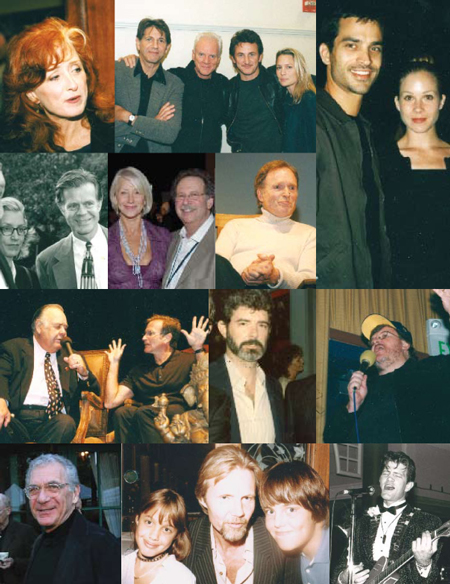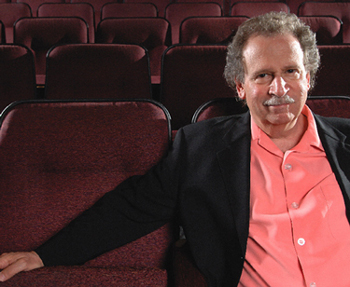Mark Fishkin knows how to pick ’em. Last year’s Mill Valley Film Festival not only screened The Queen and The Last King of Scotland, which both went on to garner widespread acclaim; it also featured appearances by their respective stars, Helen Mirren and Forest Whitaker, who later won Oscars for their roles.
This year’s 30th anniversary program promises an equally stellar lineup, with Cassandra’s Dream from Woody Allen; Michael Clayton, starring George Clooney; dozens of independent and foreign films; documentaries, including The Pixar Story; shorts; a children’s festival; and a tribute to director Ang Lee, whose Lust, Caution with Joan Chen will be screened on opening night.
Whether any entries receive an Oscar next spring is almost beside the point. The festival is foremost a showcase for bringing outstanding cinema to Northern California filmgoers. “It’s a sophisticated audience,” says Fishkin, the executive director and founder of the festival. “The Bay Area is an even stronger market than L.A. for specialty films.” Ideally, of course, some of the showings will have a life beyond October. “Most films that are made have no distributor,” Fishkin says, “so for many independent films, this could be their last shot. But my hope is that they get noticed.”
That happened in a big way back in 1987 when the world premiere of Walking on Water, starring Edward James Olmos, received a standing ovation. After the screening, says Fishkin, “distributors were racing to the pay phone in the lobby of the Sequoia.” The film was picked up by Warner Brothers and re-released as Stand and Deliver. Another success story was The Brother From Another Planet, which turned into a box-office hit for then-little-known director John Sayles. Other noteworthy films that had their U.S. premiere in Mill Valley include My Left Foot, Cinema Paradiso and Strictly Ballroom.
So significant is the festival’s cachet that industry luminaries routinely show up for tributes. The roster of attendees has included Donald Sutherland, Robin Williams, Jean-Pierre Jeunet, Felicity Huffman, Tim Robbins and Robert Altman. “We’ve been blessed with some fantastic guests,” Fishkin says. “We had Jeanne Moreau in 1982. Jeanne Moreau came to Mill Valley!”
Fishkin never aspired to become an indie film guru. He was a ceramicist who left the East Coast for a motorcycle trip west and ended up in Colorado, where he opened an art gallery. He was still there for the birth of the Telluride Film Festival. When he moved to the Bay Area in 1976, he saw a void. In an area rife with creativity, he says, “I was appalled at the lack of alternative cinema. There was such tremendous talent here: Carol Ballard, who directed The Black Stallion. Director Michael Ritchie (The Candidate) was living in Mill Valley. There were so many vibrant people.” He reels off a list of industry greats: George Lucas, Frances Ford Coppola, Ann Hershey, John Korty, Gunvor Nelson, cinematographer Dave Meyers, Caleb Deschanel. “There were great people working in video, too.”
Fishkin began programming a weekly film series at College of Marin, then took over Mill Valley’s Saturday Night Movies at the Odd Fellows Hall (now the Throckmorton Theatre). In 1977, he formed a board of directors with Rita Cahill and Lois Kohl. They recruited 10 subscribing members, some of whom are still among today’s 3,000 active members, and the Mill Valley Film Festival was born.
The first program in 1978 ran for three days and had a budget of $11,000. “Those were films I’d still be proud to show today,” says Fishkin. “That was such an exciting time. It was the renaissance of American filmmaking. It was also the height of the Australian new wave.” The program featured the work of local filmmakers, including Coppola’s The Rain People and Lucas’s documentary Filmmaker.
Also included was a tribute to writer/director/cinematographer John Korty. “When he walked in a few minutes before the show, I said to myself, ‘We’ve made it,’” Fishkin says.
Innovation was a hallmark from the beginning, with a children’s film program and film-making workshops for kids. The festival was also among the first to embrace video. And Fishkin calls its industry panels and seminars for filmmakers “our best-kept secret.”
Fishkin is grateful for the early encouragement from local talent. Lucas is a longtime supporter. So is director Philip Kaufman, who was honored in the festival’s second year. Martha Coolidge’s semiautobiographical documentary about date rape, Not a Pretty Picture, screened in 1976. “She has gone on to be one of Hollywood’s top women directors,” Fishkin says.
Wider industry support came gradually. My Bodyguard, Tony Bill’s directorial debut, was shown in the third year, and the film went on to do well as a result. “The industry realized we can increase exposure and success,” Fishkin says. It wasn’t until year 10, though, that they started to get major corporate sponsors.
The festival’s prestige has steadily increased. In 1987, Fishkin helped launch Singapore’s film festival and programmed all its English-language films. (As a result of that collaboration, Singapore’s most recent grand prize winner will be screened in Marin this year.) In 1991, he was invited to Moscow to program a retrospective of the Mill Valley Film Festival. “I showed six films that depicted different aspects of America,” he says. “There were huge crowds. It got a tremendous reception.” Afterward, there was a move to have one of the films, Longtime Companion, shown on public television because of its discussion of AIDS.
This year, as the festival turns 30, “it’s a time of looking back and also looking forward,” Fishkin says. For October’s festivities, tributes will now have a physical identity; Fishkin has been working with a local artist to produce a statuette.
New outreach programs are in the works from the California Film Institute (CFI), the festival’s parent company, which already works with nearly 4,000 kids a year. Its flagship program offers free screenings with visiting filmmakers, as well as subject-matter experts who address such topics as racism, poverty, religion, AIDS, activism, war and the environment. Another, yearlong curriculum guides 200 high school students through a series of international films that address coming-of-age issues. And the Young Critics’ Jury is a crash course in media literacy, filmmaking, film festivals and film curating for 20 high school students, some of whom select youth-produced films to be screened during the festival.
Last spring, CFI launched My Place, which gives urban kids “the opportunity to make a short film about their neighborhood, their school, their home, whatever ‘my place’ signifies to them,” says outreach coordinator John Morrison. Ten youngsters who live in San Rafael’s Canal district participated in the pilot program. They made storyboards, learned to use Photoshop and were equipped with a video camera. “There were some standouts,” Morrison says. “When they showed one student’s work at the community-based Canal Alliance, there wasn’t a dry eye in the house.” Next year My Place will expand to include kids living in San Francisco’s Hunters Point.
Also new is the CFI headquarters, which moved from Mill Valley to San Rafael within walking distance of the Rafael theater, one of the festival’s two venues (with the Sequoia in Mill Valley).
Despite the move, “it will always be the Mill Valley Film Festival,” says Fishkin. He acknowledges that it’s harder for new artists to live in Marin these days, compared to the 1970s. “But everything changes. Life has cycles. Mill Valley is still a community that’s tremendously supportive of the arts.”
The Mill Valley Film Festival runs October 4–14. Details at mvff.com.

Top row: Bonnie Raitt, 2002; Peter Coyote, Malcolm McDowell, Sean Penn, Robin Wright Penn, 2001; Jon Schaech, Christina Applegate, 1999. Second row: Felicity Huffman, William H. Macy, 1998; Helen Mirren, Mark Fishkin, 2006; Dick Cavett, 2000. Third row: Jonathan Winters, Robin Williams, 2002; George Lucas, 1985; Michael Moore, 2002. Bottom row: Sydney Pollack, 2006; Angelina Jolie, Jon Voight and son, 1985; Chris Isaak, 2002


